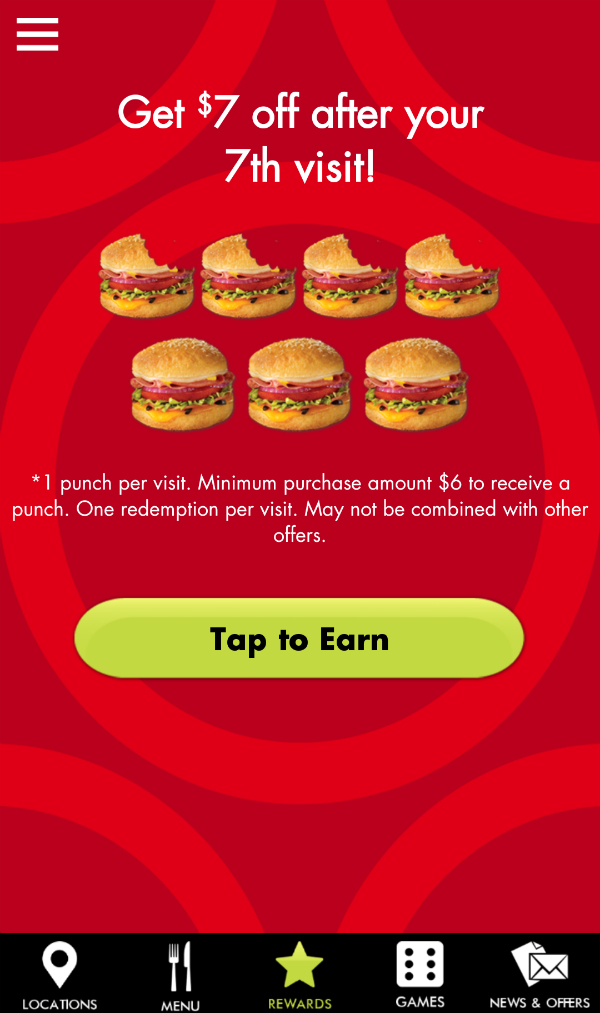
“There’s an app for that.”
There’s an app for almost anything now. And this might be a problem.
If your business is ready to ramp up its online and mobile marketing, it may be enticing to jump into the app game. But, before you do that, let’s temper that excitement a bit and take a hard look at exactly the market you’d be getting into.
Smartphone usage continues to climb, but the app craze of the early 2010s appears to have died down to an extent. That’s not to say smartphone users aren’t still loading up their hard drives with apps and that some businesses aren’t excelling on the app front, but your company should be cautious before making the leap into the marketplace.
An alternative to entering the app field is to upgrade your existing website’s mobile experience. In a recent blog post, we explained the rationale and logistics of making a website mobile-friendly. Now, we’ll look at what’s worth more of your time and resources in 2016: a mobile app or your mobile site?
The Mobile Web Landscape
Mobile traffic and search queries began overtaking their desktop counterparts in 2014. It’s worth noting that desktop traffic continuously grew from 1990 to about 2010 and has since leveled off, although it remains consistent.
So, while internet usage via desktop has remained steady over the last few years, mobile web traffic is on a meteoric rise. When comparing mobile web browser traffic to app traffic, mobile websites are seeing more than 2 times the number of unique visitors, according to a 2015 Morgan Stanley report.
However, loyalties to mobile websites aren’t as strong as they are for apps, and that’s both a good and a bad thing for the mobile internet. Smartphone users spend a great amount of time in their apps – 87 percent of their total time on a smartphone, to be exact, according to a 2015 comScore report. This means individual sessions in an app are usually much, much longer than they are on a specific mobile website.
The Mobile App Landscape

- Separate reports from Forrester Research and Nielsen over the last couple of years have found that while smartphone owners use an average of about 25 different apps each month, only their top five apps (which differs by person) are getting a lot of love – more than 80 percent of a user’s total time in any app, in fact.
- As of late 2014, according to Forrester Research, users spent a disproportionately high amount of time in the five following apps: Facebook, YouTube, Maps, Pandora and Gmail. You may have noticed that Google owns three of those properties.
- The app market is only seeing serious download activity from the top 7 percent of all smartphone owners who download and use apps. This small demographic of serial app downloaders is actually responsible for 50 percent of all download activities.
- A strong majority (65.5 percent) of smartphone users don’t download a single app over the course of a month, according to a 2014 comScore report. Of those who do make a download within a month’s time, most are only adding 1-3 apps in that span.
- According to Forrester, social media and communication (WhatsApp, etc.) apps consume 21 percent of all smartphone minutes, not counting phone calls and text messaging. Gaming, streaming video, news, weather, music and sports apps also take up large chunks of smartphone owners’ time.
- Apps tend to keep much of their traffic contained. This means that smartphone users are generally more hesitant to click a link and leave an app than they would be when on a mobile site, or even the desktop version of a site.
Analyzing Mobile Apps vs. The Mobile Web
You may have seen that apps beat the mobile web by a landslide when it comes to what takes up a user’s time on a smartphone. However, you also learned that mobile websites see much more traffic as a whole than apps do.
There is a quasi-monopoly on the app market. Google and Facebook mobile programs are dominating the competition. Other apps have found success, but they don’t account for nearly the amount of usage that Google and Facebook properties do.
On the other hand, the mobile web seems to be fostering healthier competition. Mobile web users appear to spread their attention over a wider range of properties, and they’re more likely to find a site they’ve never visited before.
Mobile web looks like the clear winner here going forward, but before we discuss how you can get a leg up on the competition with your mobile website, let’s look at a couple of cases where an app might still be worth your time.
Where a Mobile App Would Make Sense
If you run a small local business or a B2B type of company, putting your money and time into an app this year will likely be a waste of resources.
However, for certain businesses, a mobile app could be a great way to extend the experience for someone who has interacted with the company before. This means that the individual has walked into your store or is well acquainted with your website.
A mobile app could enhance the experience a customer has already had with your business. For example, many sandwich and coffee shops have moved from punch cards to an online app when tracking customers’ visits. It’s a sensible upgrade, and very helpful to the customer, when done right.
Schlotzsky’s Lotz4Me app records how many sandwiches you have eaten until you’ve earned a free one, and you can use the app to see the sandwich chain’s menu and all locations.
The app also features company news and offers, some of which can get pushed to alert your phone. Mobile websites lack the latter capability. As you might imagine, some of the information from the company’s website (locations, menu and even news) has been repurposed to fit in the app, but it all helps build a better experience than simply seeing how close you are to a free sandwich.
Apps such as these are a logical extension of a business’s normal offerings, whether they usually take place online or face-to-face. A supplemental asset like this helps lead to more purchases down the road, while also building more loyalty to and appreciation of the specific company.
The national sandwich chain example might not be the best one if you own a restaurant or other type of local business with only one physical location. Asking your customers to download an app when you only have one locale might be a stretch, but perhaps you now have a few ideas on what makes for an effective app for the average business.
SaaS Success
It’s worth mentioning that software as a service (SaaS) companies can excel on the app platform, too. If they can get their product in an app form to work as well as their desktop version, then it’s a win for them and their customers. Even so, you’ll notice that this situation still only applies to users who have had prior experience with the company behind the app.
Apps aren’t generally a great way for an existing brand to grow its audience. Users either download your app because they’ve done business with you in some other setting, or they just never even find out or care about your app. The average smartphone user isn’t scrolling through Google Play or the App Store just looking for another app to download. Many have phone storage limitations to worry about, anyway.
If you do go the app route, you may not put up Facebook- or Google-like numbers, but you can still find success on the platform if you’re able to create a worthwhile experience – one that differs from your website – for your existing customer base.
Making Your Mobile Site Competitive

This starts with infusing your website with responsive design. How to test your site’s responsiveness and how to get started on making it mobile-friendly were previously covered in one of our recent blog posts. See here.
Having a mobile-friendly site helps with search engine rankings, and it helps you better compete on the mobile web, where many big opportunities await. From there, it’s all about employing the best SEO practices and keeping your site replenished with plenty of appetizing, worthwhile content.
Instead of spending time having a developer create an app, go back and evaluate how your site looks and functions on various screen sizes. What needs to be present? What can be condensed or hidden? Your content team should get together with your developer and make sure your site is providing the best possible user experience on devices of all sizes.
And finally, your site’s pages need to load fast. Even a 2-second delay can make all the difference between a bounce from your site and a conversion. Google’s PageSpeed Insights will let you know if any pages on your site load slowly and what you can do to speed them up.
Speeding Up Your Website
Here are some quick steps you can take to get your website running more smoothly and quickly, especially on mobile devices:
- Reduce scripts and move them to the bottom of the page.
- Mitigate the number of plugins your site utilizes. Deactivate and delete any plugins you no longer need.
- Compress entire pages with tools like Gzip.
- Enable browser caching, which benefits return visitors.
- Crop your images to the exact size they’ll be displayed in a desktop browser. Remove any image comments in the file. Reduce the color depth of all images to 150 dpi or lower. Never use BMP or TIFF files.
- Make sure you don’t have pages using more than one external CSS style sheet. To see if you have more than one external style sheet on any given page, use this tool.
- If you have any elements that load slowly but are must-haves, consider moving them well below the fold, so at least the top of the page loads quickly.
Conclusion
Although Google has begun indexing content from mobile apps meaning it can show up in the search results, mobile web still appears to be the clear winner when it comes to where you should invest your marketing dollars in 2016. It behooves you to put your focus into competing on the mobile SERPs (search engine results pages) rather than in the App Store or Google Play.
If users aren’t as loyal to individual websites as they are to their top five apps, that means there’s a good chance they’ll eventually turn their attention to your site and see what you have to offer them. You’ll have a better chance on that front than you will with trying to woo new customers in the app marketplace.
There are some instances where an app makes sense, as mentioned earlier, but in most cases, mobile web appears to be the way to go.
To get help from a team that can make your website mobile-friendly and more competitive in the world of mobile search, talk to the Eminent SEO team. Just call 800.871.4130.




The Mobile Application is very useful in your life. Because the Mobile app provides a very user-friendly interface on your phone it also gives you more features on your new mobile app upgrade version. The mobile app easily available on the app store it very easy to install on your phone.